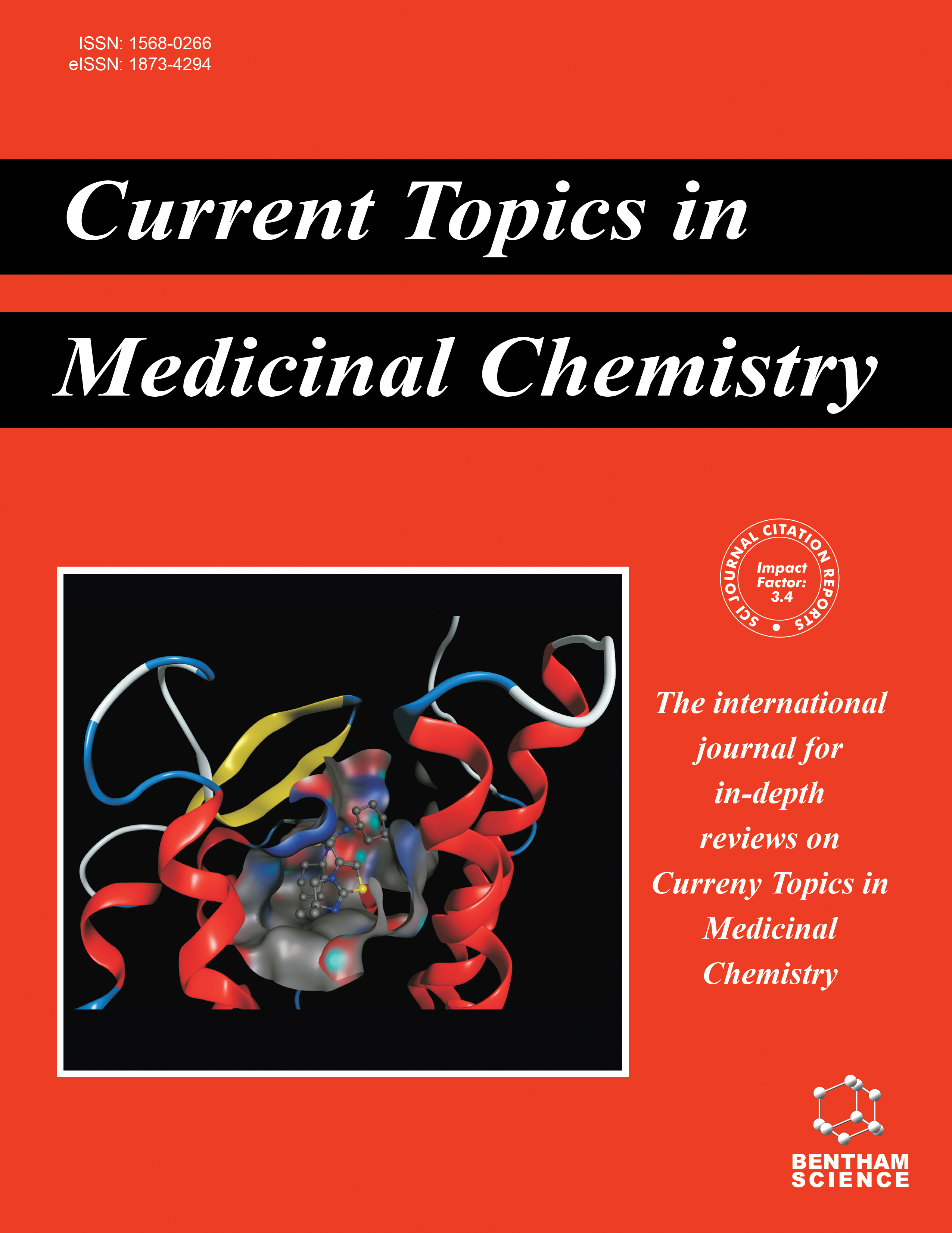- Home
- A-Z Publications
- Current Topics in Medicinal Chemistry
- Previous Issues
- Volume 3, Issue 6, 2003
Current Topics in Medicinal Chemistry - Volume 3, Issue 6, 2003
Volume 3, Issue 6, 2003
-
-
Small-Molecule Inhibitors of Actin Dynamics and Cell Motility
More LessAuthors: G. Fenteany and S. ZhuCell motility is a central feature of a range of normal and pathological processes, including embryonic development, tissue repair, immune cell function, angiogenesis, and cancer metastasis. The dynamics of the actin cytoskeleton power cell migration. A large number of proteins are known or suspected to play roles in regulating actin dynamics. While there are now many available small molecules that target the actin cytosk Read More
-
-
-
Recent Advances in Glycomics and Glycogenetics
More LessAuthors: S.M. Khersonsky, C.M. Ho, M-a.F. Garcia and Y-T. ChangAs the human genome sequence is nearly deciphered, it is important to turn the attention to the physiological functions of the genes. Thus, the study of the gene products, the proteins, is the next big challenge. The proteins, however, are not the final gene products in many cases. It has been shown that carbohydrates participate in posttranslational modifications and in many other functional regulations, hence the study Read More
-
-
-
Custom DNA-Binding Proteins and Artificial Transcription Factors
More LessExpression of the genome is primarily regulated at the level of transcription by gene-specific transcription factors, which recognize specific DNA sequences to activate or inhibit transcription. The ability to control gene expression at will would provide scientists with a powerful tool for biotechnology and drug-discovery research. Over the last decade or so, researchers have made great strides in our understanding of th Read More
-
-
-
Supertargeted Chemistry: Identifying Relationships Between Molecular Structures and their Sub-Cellular Distribution
More LessBy G.R. RosaniaSupertargeted chemistry is the study of how chemical structures localize or direct molecules to specific sub-cellular compartments in living cells. Supertargeting can be used to increase the activity or specificity of an inhibitor against its target, by concentrating the inhibitor in the particular organelle where the target is active. But, unlike structure-activity relationships, structure-localization relationships are not a simple funct Read More
-
-
-
Micro- and Nanotechnologies for Studying Cellular Function
More LessAuthors: J. Shim, T.F. Bersano-Begey, X. Zhu, A.H. Tkaczyk, J.J. Linderman and S. TakayamaThe study of complex biological systems requires methods to perturb the system in complex yet controlled ways to elucidate mechanisms and dynamic interactions, and to recreate in vivo conditions in flexible in vitro set-ups. This paper reviews recent advances in the use of micro- and nanotechnologies in the study of complex biological systems and the advantages they provide in these two areas. Particularly useful for Read More
-
-
-
Array-Based Technologies and their Applications in Proteomics
More LessAuthors: G.Y. Chen, M. Uttamchandani, R.Y. Lue, M-L. Lesaicherre and S.Q. YaoLatest microarray-based technologies, including small molecule-, peptide-, protein- and cell-based arrays, and their applications in the field of proteomics are reviewed.
-
-
-
Embryonic Stem Cells: A Perfect Marriage Between Gene Regulation and Regenerative Medicine
More LessThe mechanism of mammalian gene regulation is highly complex, involving multiple layers of feedback control loops and dynamic chromatin remodeling. The current approach used to dissect the genetic circuitry of mammalian gene regulation utilizes somatic cells and protein fusion as a means to modulate protein interactions. This approach has several limitations that include (i) genome inaccessibility, (ii) high backgroun Read More
-
Volumes & issues
-
Volume 25 (2025)
-
Volume 24 (2024)
-
Volume 23 (2023)
-
Volume 22 (2022)
-
Volume 21 (2021)
-
Volume 20 (2020)
-
Volume 19 (2019)
-
Volume 18 (2018)
-
Volume 17 (2017)
-
Volume 16 (2016)
-
Volume 15 (2015)
-
Volume 14 (2014)
-
Volume 13 (2013)
-
Volume 12 (2012)
-
Volume 11 (2011)
-
Volume 10 (2010)
-
Volume 9 (2009)
-
Volume 8 (2008)
-
Volume 7 (2007)
-
Volume 6 (2006)
-
Volume 5 (2005)
-
Volume 4 (2004)
-
Volume 3 (2003)
-
Volume 2 (2002)
-
Volume 1 (2001)
Most Read This Month
Article
content/journals/ctmc
Journal
10
5
false
en


